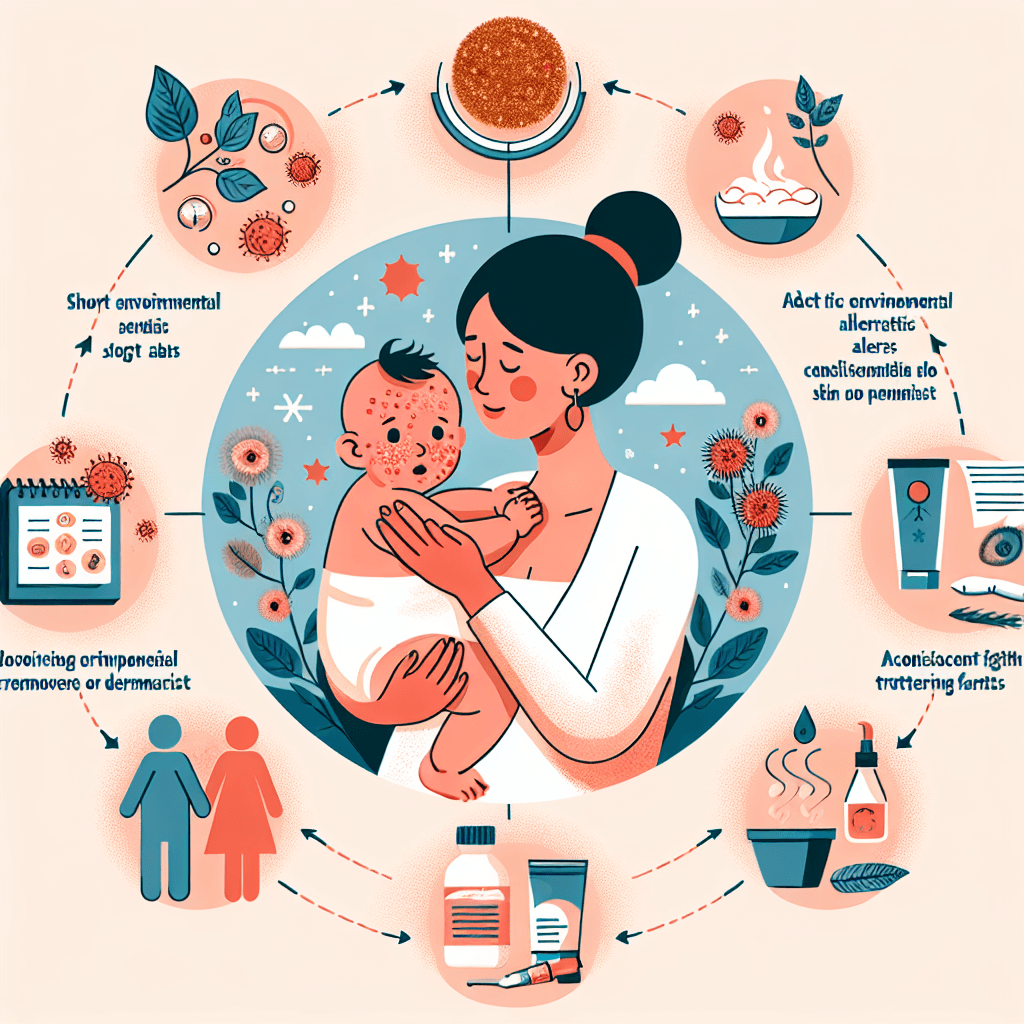Atopic Dermatitis in Babies: Causes and Treatment
Introduction
Atopic dermatitis in babies is a very common condition, which can cause a lot of stress and anxiety for parents. This comprehensive guide supports families by providing detailed information on the causes of atopic dermatitis, the stages of its development and the most effective treatment methods available. The aim is for parents to be better informed and to manage their babies' troublesome symptoms more easily.
Causes of Atopic Dermatitis
Atopic dermatitis, also known as eczema, is an inflammatory skin condition manifested by redness, dryness and intense itching. One of the main causes of atopic dermatitis in babies is genetic predisposition. If parents or older siblings have had eczema, the new family member is more likely to develop the condition. However, other factors such as environmental allergens, irritants (soaps, detergents, perfumes) and climate change can also contribute to or worsen symptoms.
Essential Stages of Atopic Dermatitis
Atopic dermatitis can be divided into three essential stages: initial (infants), intermediate (young children) and chronic (older children and adults). In the initial stage, eczema usually appears on the face, scalp and trunk and can then spread to the neck and extremities. In the intermediate stage, the lesions become more circumscribed and frequently appear in areas such as the elbows or behind the knees. In the chronic phase, the skin becomes thicker and lichenified due to repeated scratching and prolonged inflammation.
Treatment of Atopic Dermatitis
Treatment of atopic dermatitis focuses on moisturizing the skin, reducing inflammation, and preventing secondary infections. It is essential to use fragrance-free and alcohol-free moisturizers designed for babies' sensitive skin. Corticosteroid creams, prescribed by a dermatologist, can effectively control inflammation, but should be used with caution and under close medical supervision. In addition, antihistamines may be recommended to control itching and antibiotics for secondary bacterial infections.
Prevention of Atopic Dermatitis
Although it is not always possible to prevent the onset of atopic dermatitis, there are some measures that can reduce the risk of exacerbation of symptoms. It is important to maintain a daily skin care routine, avoid irritants, and educate the entire family on prevention methods. A balanced diet rich in Omega-3 fatty acids and probiotics can also play a role in maintaining skin health.
The Role of Professional Diagnosis and Parental Education
A crucial aspect in the management of atopic dermatitis is the professional diagnosis. This means that at the first signs of eczema, the baby should be brought to a dermatologist for evaluation and personalized treatment recommendations. Parental education is also vital. Parents need to learn to recognize the signs and symptoms of eczema, understand how to treat it, and identify triggers so they can avoid it.
Conclusion
Atopic dermatitis in babies can be challenging for parents, but with the right information and proper medical support, the symptoms can be managed effectively. Early diagnosis, a proactive approach to treatment and constant skin care are essential to minimize the impact of atopic dermatitis on the child's life. Therefore, this guide should serve as an informative starting point for all parents looking for the best ways to support their babies' skin health.
Don't forget to visit our special baby section of the store and subscribe to our newsletter for more information and useful tips related to childcare. Together, we can ensure that every baby gets the best possible care for healthy, happy skin.














































































































































